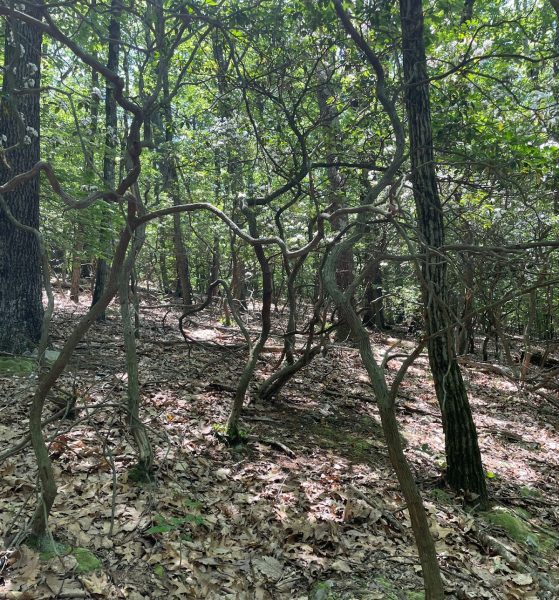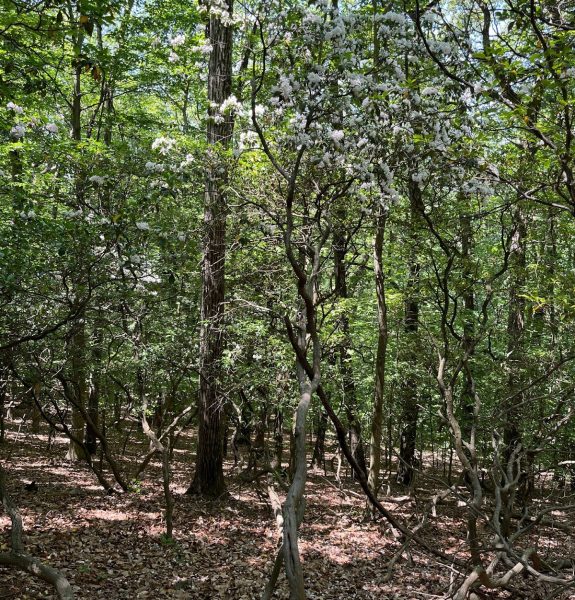Mountain laurels (Kalmia latifolia) blooming on one of Heritage Conservancy’s properties.
Mountain laurels are gorgeous shrubs that have been Pennsylvania’s state flower since 1933. It is one of the few evergreen shrubs that is native to Pennsylvania, however it is very widespread across the state. It is in the heath family living on drier, more acidic sites, while the larger great laurel or rhododendron (Rhododendron maximum) prefers moist sites. Every part of mountain laurels are toxic – even honey made from the flowers can be fatal if eaten in large amounts.

In some parts of the Appalachian Mountains, including Pennsylvania, mountain laurels grow into dense thickets that are almost impossible to walk through. These dense thickets become a spectacle to see as they bloom in May and June. Their large pinkish white flowers attract many native pollinators including multiple butterfly species and the ruby throated hummingbird. These dense stands are great shelter for wildlife, especially as a thermal refuge during the winter months.
Occasionally these thickets become so dense that they reduce tree regeneration by blocking light reaching seedlings on the forest floor. However in Bucks County, mountain laurels are struggling to survive and regenerate. They face a similar fate as most of our native plants, too many deer. Even though mountain laurels are toxic to deer, they browse heavily on the few evergreen shrubs that are present during the winter months. Evergreen plants invest a lot of energy into their leaves, therefore, losing too many of them will eventually kill the shrub over time. Mountain laurels around Bucks County are mainly restricted to a few sites where the deer population is smaller due to hunting pressure. Where they are present, they usually look more like trees as all their bottom leaves have been browsed by deer.

Mountain laurels often rely on natural disturbances, like wildfires, to get established. They prefer ridgetops where wildfires and strong winds would historically manage other vegetation, allowing light for the laurel seedlings to get established. With the reduction of local wildfires and the overabundant deer herd in Bucks County, the future of our state flower is looking bleak. However, mountain laurels are thriving in much of the Appalachian Mountains and it will not be hard to find their spectacular blooms next spring.
Thanks for reading.
Tyler Kovacs, Conservation Steward.
